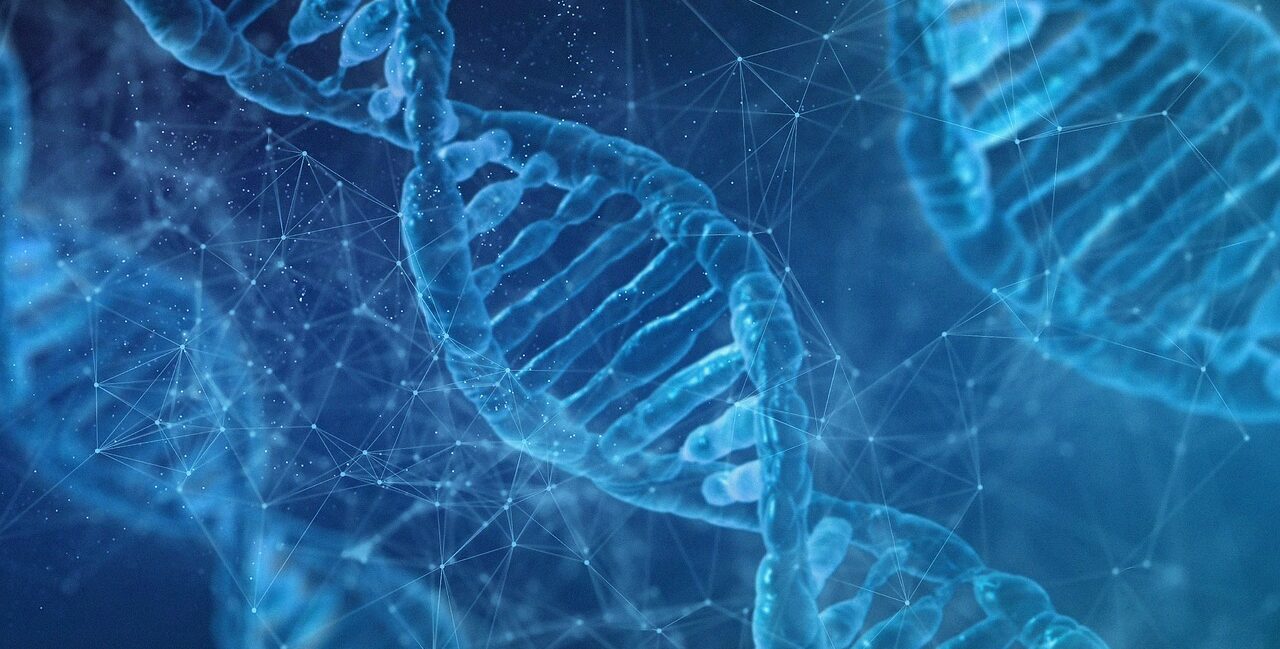Have you ever wondered how life on Earth has changed over time? How species have adapted and evolved to survive in different environments? The answer lies in the fascinating world of genetics and evolution. DNA, or deoxyribonucleic acid, is the genetic material that carries the instructions for the development and function of all living organisms. It is a complex molecule that encodes the information that determines our physical characteristics, such as eye color, hair type, and even our susceptibility to certain diseases.
But DNA is not just important for understanding ourselves, it is also crucial in unraveling the mysteries of evolution. Evolution is the process by which living organisms change and adapt over time through natural selection and other mechanisms. It is the driving force behind the diversity of life on Earth, from the smallest microorganisms to the largest animals.
So, why is DNA so important in understanding evolution? Well, DNA is the genetic material that is passed down through generations, allowing for the transmission of traits and characteristics from parents to offspring. It is through mutations in DNA that genetic diversity arises, providing the raw material for natural selection to act upon. Natural selection favors traits that increase an organism’s chances of survival and reproduction, leading to the evolution of new species over time.
In this article, we will explore the role of DNA in evolution, the evidence for evolution in DNA, and the controversies and misconceptions surrounding this fascinating topic. Through tables, bullet points, and statistics, we will dive deep into the mechanisms of evolution and the ways in which DNA plays a crucial role. We will provide reliable sources to support our claims and provide a balanced perspective on this exciting and important area of research.
So, let’s get started and discover the secrets of DNA and evolution!
The Role of DNA in Evolution
DNA is the key player in the process of evolution. It is the genetic material that is passed down from generation to generation, providing the blueprint for the development and function of all living organisms. DNA is made up of four chemical building blocks, or nucleotides: adenine (A), guanine (G), cytosine (C), and thymine (T). The order of these nucleotides determines the genetic code that is read by cells to create proteins, the building blocks of life.
One of the most important roles of DNA in evolution is the introduction of genetic diversity through mutations. Mutations are changes in the DNA sequence that can occur spontaneously or be induced by environmental factors such as radiation or chemicals. While most mutations are neutral or harmful, some can be beneficial, providing organisms with new traits that can improve their chances of survival and reproduction.
Genetic drift and gene flow are two other mechanisms that can affect the evolution of populations. Genetic drift is the random fluctuation of allele frequencies in a population due to chance events, such as the death of individuals. This can lead to the loss of genetic diversity and the fixation of certain traits in a population. Gene flow, on the other hand, is the movement of genes between populations through migration or interbreeding. This can introduce new genetic material into a population, increasing its diversity and potential for adaptation.
The interplay between mutations, genetic drift, and gene flow can lead to the evolution of new species over time. Natural selection acts on the genetic variation present in a population, favoring traits that increase an organism’s chances of survival and reproduction. Over time, these advantageous traits become more common in a population, while less advantageous traits may disappear.
DNA plays a crucial role in evolution by providing the genetic material that is passed down from generation to generation. Mutations introduce genetic diversity, while genetic drift and gene flow can affect the distribution of traits within a population. Natural selection acts on this variation, leading to the evolution of new species over time. Through the study of DNA and its role in evolution, scientists have gained a deeper understanding of the diversity of life on Earth and how it has changed over time.
Evidence for Evolution in DNA
One of the most compelling pieces of evidence for evolution is the similarity and differences in DNA between species. All living organisms share a common ancestor, and this is reflected in the similarities in their DNA. For example, the genetic code that is used to create proteins is nearly identical in all living organisms, from bacteria to humans.
However, there are also differences in DNA between species that reflect their evolutionary relationships. These differences can be used to trace the evolutionary history of different groups of organisms. DNA sequencing has revolutionized the study of evolution, allowing scientists to compare the DNA of different species and reconstruct their evolutionary relationships.
One example of how DNA evidence supports the theory of evolution is the study of homologous structures in different species. Homologous structures are anatomical features that are similar in structure and development, but have different functions. For example, the forelimbs of mammals, birds, and reptiles have the same basic structure, but are used for different purposes (such as walking, flying, or swimming). This similarity in structure suggests that these organisms share a common ancestor, and this is supported by the similarities in their DNA.
Another example of how DNA evidence supports the theory of evolution is the study of pseudogenes. Pseudogenes are non-functional copies of genes that have been inactivated by mutations. They are remnants of once-functional genes and can provide clues to the evolutionary history of a species. For example, humans have a pseudogene for vitamin C synthesis, while most other animals do not. This suggests that humans and other primates share a common ancestor that lost the ability to synthesize vitamin C, and this is supported by the similarities in their DNA.
In summary, DNA evidence provides strong support for the theory of evolution. Similarities and differences in DNA between species can be used to trace evolutionary relationships, and examples such as homologous structures and pseudogenes provide further evidence for common ancestry. Through the study of DNA, scientists have gained a deeper understanding of the evolutionary history of life on Earth and the mechanisms that have shaped it.
Evolutionary Patterns in DNA
The study of DNA has also provided insights into the patterns of evolution. One important tool for understanding evolutionary timelines is the molecular clock. The molecular clock is a method for estimating the time of divergence between different species based on the rate of mutations in their DNA. By comparing the DNA sequences of different species, scientists can estimate how long ago their common ancestor lived. This information can be used to construct evolutionary timelines and to understand the processes that have driven the evolution of different groups of organisms.
Another important area of study is the relationship between DNA and the fossil record. Fossils provide a record of the past, showing how different groups of organisms have evolved over time. By comparing the morphology of fossils with the DNA of living organisms, scientists can reconstruct the evolutionary history of different groups of organisms. For example, the discovery of the fossil Archaeopteryx helped to support the idea that birds evolved from dinosaurs, and this is supported by the similarities in their DNA.
Environmental factors can also have a significant impact on DNA and evolution. For example, environmental stressors such as climate change or exposure to toxins can cause mutations in DNA that can lead to evolutionary change. In some cases, these changes can be beneficial and lead to the evolution of new traits that allow organisms to adapt to their changing environment. In other cases, environmental stressors can lead to the extinction of species that are unable to adapt.
The analysis of DNA has offered significant revelations about the underlying patterns of evolution. The molecular clock can be used to estimate evolutionary timelines, while the study of fossils and DNA can be used to reconstruct the evolutionary history of different groups of organisms. Finally, environmental factors can have a significant impact on DNA and evolution, driving the evolution of new traits and sometimes leading to the extinction of species.
Controversies and Misconceptions
Despite the overwhelming evidence supporting evolution, there are still some common misconceptions and controversies surrounding DNA and evolution. One of the most common misconceptions is that evolution is “just a theory” and therefore not a fact. However, in science, a theory is a well-supported explanation of the natural world, and the evidence supporting evolution is vast and varied.
Another common misconception is that evolution is a random process. While mutations are random, natural selection is a non-random process that results in the adaptation of organisms to their environment. Additionally, some critics argue that there are no transitional forms in the fossil record, but this is not true. The fossil record is full of transitional forms that provide evidence for the evolution of different groups of organisms.
Despite these misconceptions, the scientific consensus is clear: evolution is supported by an overwhelming amount of evidence from various fields of study, including genetics, paleontology, and biogeography. The evidence for evolution is so strong that it is considered one of the most well-established principles in all of science.
However, there are still some common criticisms of evolutionary theory that are often raised. One criticism is that evolution violates the laws of thermodynamics, but this is not true. Evolution does not violate the laws of thermodynamics because it is an open system that receives energy from the sun. Another criticism is that the complexity of living organisms cannot be explained by evolution, but this is also not true. Evolution can explain the complexity of living organisms through the accumulation of small changes over time.
While there are still some controversies and misconceptions surrounding DNA and evolution, the overwhelming evidence supports the theory of evolution. The scientific consensus is clear: evolution is a well-supported explanation of the natural world that has been supported by evidence from various fields of study. By addressing common criticisms and misconceptions, we can continue to build our understanding of evolution and the role of DNA in shaping the diversity of life on Earth.
Conclusion
In conclusion, DNA plays a crucial role in understanding evolution. Through the study of DNA, we can trace the evolutionary relationships between different species, understand the mechanisms of evolution, and identify the genetic changes that drive evolutionary change.
We have seen that mutations, genetic drift, and gene flow are all important processes that contribute to genetic diversity and evolution. Additionally, we have discussed the use of DNA sequencing in tracing evolutionary relationships and the molecular clock in determining evolutionary timelines. The relationship between DNA and the fossil record has also provided valuable insights into the history of life on Earth.
Despite some common misconceptions and controversies, the overwhelming evidence supports the theory of evolution. The scientific consensus is clear: evolution is a well-supported explanation of the natural world that has been supported by evidence from various fields of study. DNA evidence, in particular, has provided some of the strongest evidence for evolution.
As our understanding of DNA and evolution continues to grow, we can gain a deeper appreciation for the diversity of life on Earth and our place in the natural world. By continuing to study DNA and evolution, we can unravel the mysteries of life’s history and develop a more complete understanding of the natural world.
Resources
- Alberts B, Johnson A, Lewis J, et al. Molecular Biology of the Cell. 4th edition. New York: Garland Science; 2002. Available from: https://www.ncbi.nlm.nih.gov/books/NBK21054/
- National Human Genome Research Institute. (2020). DNA Sequencing Fact Sheet. https://www.genome.gov/about-genomics/fact-sheets/DNA-Sequencing-Fact-Sheet
- National Center for Biotechnology Information. (2021). BLAST: Basic Local Alignment Search Tool. https://blast.ncbi.nlm.nih.gov/Blast.cgi
- Smithsonian National Museum of Natural History. (n.d.). Evidence of Evolution.
- University of California Museum of Paleontology. (2021). Understanding Evolution. https://evolution.berkeley.edu/evolibrary/home.php
- Understanding Evolution. (n.d.). Misconceptions about Evolution. https://evolution.berkeley.edu/evolibrary/misconceptions_faq.php
- Zimmer, C. (2013). DNA Sequencing: A Brief Overview. National Human Genome Research Institute. https://www.genome.gov/genetics-glossary/DNA-Sequencing-A-Brief-Overview


